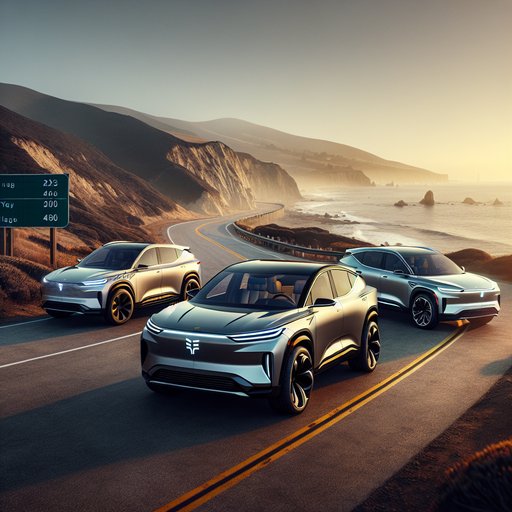
We spent a week and 612 miles with a 2024 Kia EV9 Wind AWD to see if this three-row EV justifies its price and how it stacks up against pricier electric SUVs from Rivian, Tesla, and Volvo.
Our test car was a mid-trim EV9 Wind AWD (dual motor, 379 hp, 443 lb-ft) on 20-inch wheels, EPA-rated at 280 miles. Sticker price: $63,200 before destination. The EV9 rides on an 800-volt architecture with a heat pump and 5,000-lb tow rating (AWD). Kia quotes 10–80% DC fast charging in about 24 minutes and 11 kW AC onboard charging.
Dimensions and packaging are squarely in the three-row class, with 20.2 cu ft of cargo space behind row three and up to 81.7 cu ft with seats folded. Testing spanned suburban commuting, a 70-mph highway loop, and a light towing run (1,800-lb trailer), with ambient temps from 48–76°F. We recorded 2.5 mi/kWh on the highway loop (about 250 miles at 100% in mild weather) and 2.8 mi/kWh around town. Two 350-kW DC sessions peaked at 224 kW; our best 10–80% run took 27 minutes.
Home Level 2 replenished from 10–90% in roughly 9.5 hours at 11 kW. We did not observe significant power throttling in cool-to-mild conditions. Performance is ample for family duty. Our GPS timing showed 0–60 mph in 5.9 seconds, with smooth, predictable torque delivery and well-calibrated brake blending.
Ride quality is controlled but firm over sharp impacts; body motions are tidy for a 5,800-plus-pound SUV. Steering is light yet consistent off center, and wind noise is subdued; tire roar intrudes on coarse asphalt. Under sustained downhill grades, the stronger regen setting meaningfully reduces brake usage without feeling jerky. Usability is where the EV9 shines for the price.
Adults can fit in the third row for short trips; the sliding second row makes access manageable. The flat floor and square tailgate opening simplify cargo loading, and the powered one-touch folding works as advertised. We towed a small trailer without drama; cooling and power remained stable, though range dropped by roughly 40% at 60 mph. The dual 12.3-inch screens run quickly, wireless CarPlay/Android Auto stayed connected, and Highway Driving Assist 2 tracked lanes and traffic naturally.
Kia’s 10-year/100,000-mile powertrain and battery warranty remains a strong ownership perk. Against competitors, the EV9’s value case is clear. A comparably equipped Rivian R1S starts around $78k and feels more adventurous and quicker, but offers slower peak charging and a firmer ride. Tesla’s Model X charges reliably on the Supercharger network and is quicker with more range, yet typically costs $80k-plus and its third row is lower to the floor.
Volvo’s EX90 brings an upscale cabin and advanced safety but opens around the mid-$70k mark and availability remains tight. A Model Y with the optional third row is cheaper but cramped and not a true three-row solution. Verdict: the EV9 delivers genuine three-row space, fast charging, robust driver assistance, and a long warranty at a mid-$60k transaction price—substantially undercutting premium rivals while giving up little that matters to families. If you road-trip often, the Wind AWD or Land AWD trims offer the best balance of range, equipment, and value.
Note that purchase tax credits have been limited; many buyers will extract the $7,500 via lease. For shoppers prioritizing maximum luxury or performance, spend-up competitors may appeal, but for real-world usability per dollar, the EV9 is the current benchmark.












